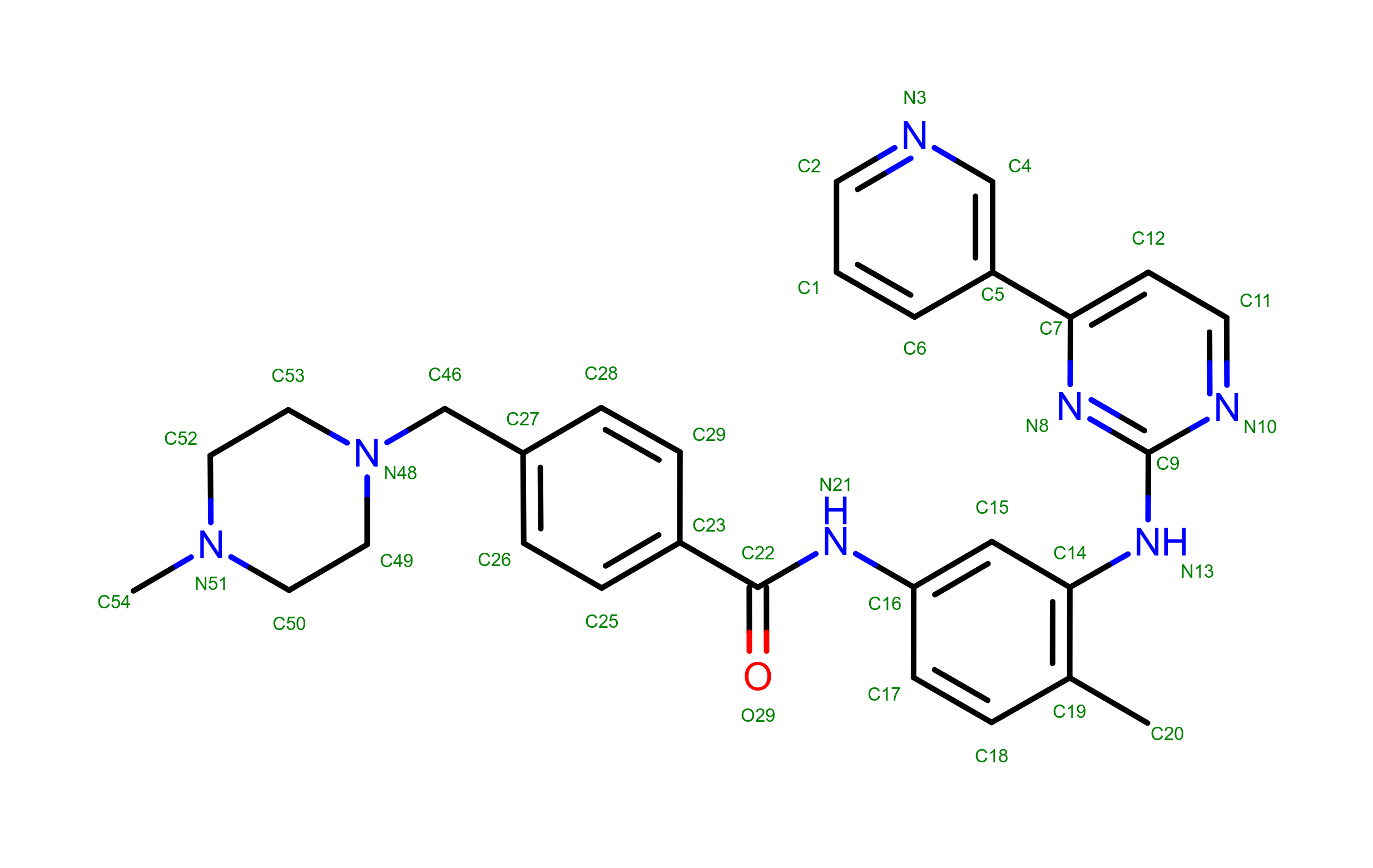Gleevec Drug Interactions
MANORAA also provides valuable information about the interactions a ligand has with the binding partner. This includes interaction types, interaction distances, and specifically which atoms are involved in the interactions.
In the case of imatinib complexed with the hABL1 binding pocket, the following key interactions are present, totaling up to three aromatic interactions and five hydrogen bonds.

Notably, the three aromatic interactions with the binding pocket focus on the two rings (C1-C6 and C7-C12). Two phenylalanine residues and one tyrosine residue surround the two rings, resulting in π-π interactions. The presence of aromatic residues in close proximity, forming a small pocket, could be a crucial characteristic of ligand binding for the aromatic regions of the ligand.

On the other hand, hydrogen bonding occurs on the nitrogen and oxygen heteroatoms, involving various residues along the ligand. These strong intermolecular forces anchor the entire ligand in place. Since hydrogen bonding is the most potent intermolecular force, these interactions are key considerations for high-affinity binding.

